Click here to get this article in PDF
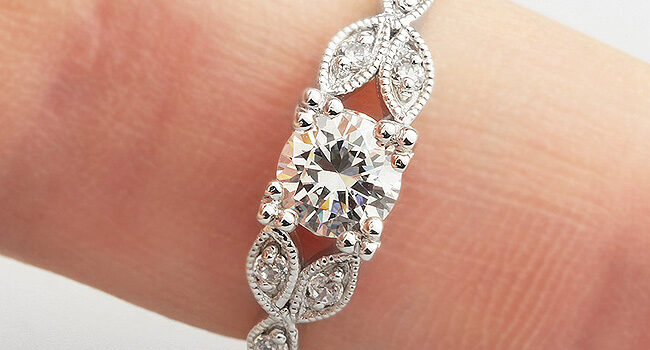
A guide to the subtle detail of milgrain in jewellery design.
You’ve likely admired the delicate milgrain beading on jewellery without even knowing the name of this unique jewellery style.
In this guide, we’ll explore the rich history, creation methods, and modern uses of this beautiful jewellery-making technique. At the same time, we shed light on its enduring popularity, especially in engagement rings and wedding rings.
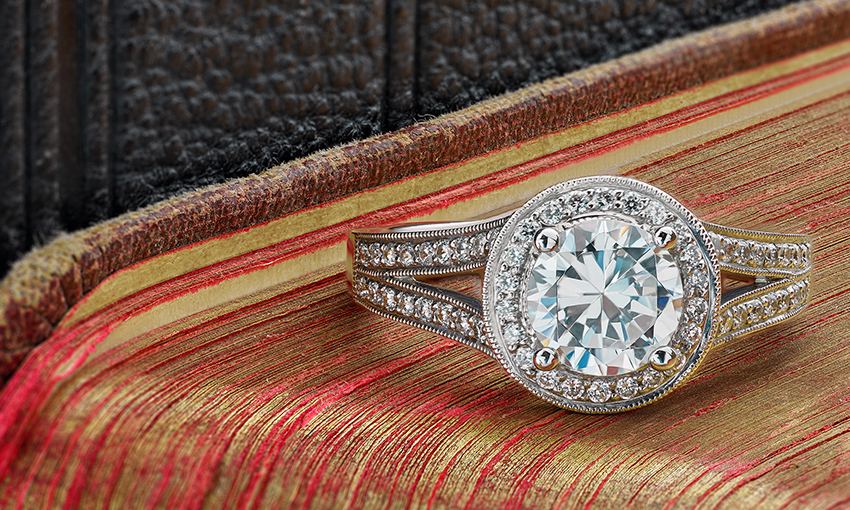
Milgrain vs Filigree
Milgrain should not be confused with a technique known as Filigree. To explain, Milgrain involves adding tiny metal beads for a textured border. By comparison, filigree is fine metal work forming delicate patterns or designs within the jewellery.
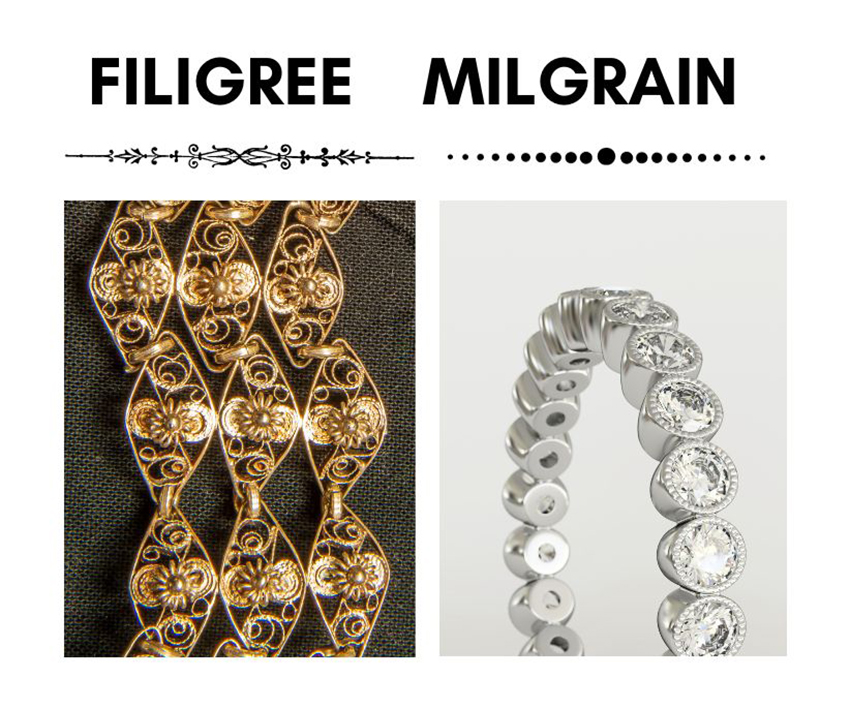
A journey through history
Milgrain jewellery detail originates from ancient Southeast Asia. The technique features tiny beads along the edges of jewellery, was first discovered in earrings from this region, dating back centuries.
While it has ancient roots, milgrain gained prominence during the Art Deco era in the early 20th century. Since then, it evolved as a timeless and widely used design element in jewellery.
In contrast, the earliest filigree dates back to ancient Greece and Mesopotamia over 5,000 years ago. Historic remains tell a tale of exquisite craftsmanship.
Derived from the Latin words “filum” (thread) and “granum” (grain), the term filigree captures the essence of this ancient art.
Edwardian elegance to Art-Deco wonder
Named during the Art Deco era, milgrain soared in popularity. In fact, Platinum and the acetylene torch facilitated its intricate detailing, making it synonymous with luxury.
The geometric designs of the time, coupled with white gold, propelled fine jewellery detail into popular culture.
Interestingly, such detail mimicked the fine lacework of materials during the Art Deco and Edwardian Periods.
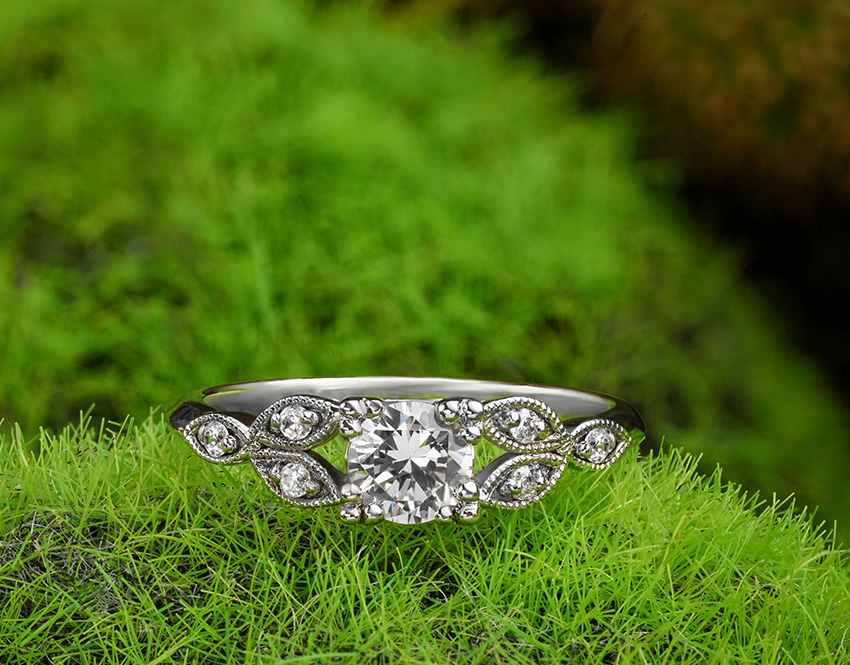
Evolution of techniques in jewellery design
Handcrafted Precision: Dating back to its inception, craftsmen painstakingly crafted each bead by hand, intricately placing and soldering them onto the jewellery—a time-consuming process that speaks to the romantic sentiment associated with milgrain.
Knurling Tools and Precision: Introducing a custom knurling tool allowed for a more efficient method. A wheel with various granular patterns rolled along the metal, engraving tiny beads and dots.
Modern Efficiency with CAD: In the digital age, 3D CAD software has revolutionized milgrain creation. Designers can simulate the effect in the virtual realm, creating wax moulds for casting, offering efficiency but perhaps lacking the charm of traditional methods.
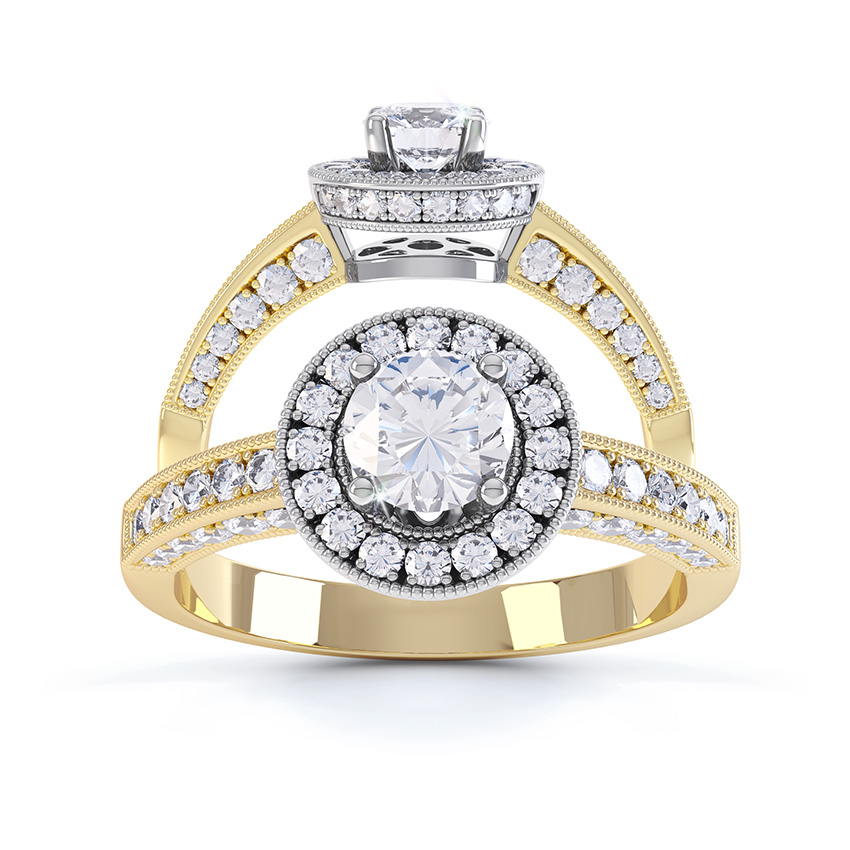
Contemporary jewellery design: where creativity flourishes
Today, migrain’s versatility knows no bounds. From subtle accents to focal points, designers experiment with size, quantity, and placement, offering a wide array of possibilities for engagement rings and wedding bands.
Benefits and considerations – beauty and care
Milgrain’s Aesthetic Appeal: Enhancing sparkle and framing gemstones with precision, milgrain adds a touch of antique elegance, bringing uniqueness to every piece.
Cost Considerations: Fortunately, this detail does not significantly impact the overall cost of jewellery. Its addition can be a thoughtful touch without increasing the final price of an engagement ring.
Maintenance Matters: Milgrain, while enduring, requires special care. Regular cleaning is crucial, considering the beads can trap dirt. Additionally, occasional care ensures the longevity of this intricate feature. Jewellers should also take care not to be heavy-handed during polishing. A previous ring commission some years ago came to us when another jeweller accidentally polished away the detail from their engagement ring.
Adding a timeless touch to your engagement ring
This jewellery detail lends itself to many gemstone cuts and metal types makes it a versatile choice for engagement rings. Its ability to evoke an old-world charm adds a unique aspect to your symbol of love.
Granular styles for the modern bride
Classic Borders: Traditional milgrain borders on ring bands evoke a vintage feel, creating a personal touch.
Modern Textures: Milgrain isn’t confined to tradition. Modern styles incorporate it to add texture, merging vintage charm with contemporary flair.
Perfect styles for ring design
Navigating the world of engagement rings is an exciting journey. From classic designs like the Pavé and Milgrain diamond engagement ring to more intricate options like the cushion cut halo diamond engagement ring, there’s a style to suit every taste.
How does Milgrain affect the cost of a ring?
Contrary to assumptions, adding fine detail doesn’t significantly raise the price of an engagement ring. Quality of the stone and the chosen metal play more substantial roles in determining cost.
View designs in person and get expert help
As part of our service, we welcome clients into our showroom to view examples of ring designs. In addition, our website boasts many styles across a wide collection of jewellery styles. Get in touch with our friendly team or visit our UK showroom Monday to Saturday. Alternatively, call, email or message us online for more help.
The post What is Milgrain? Filigree and the Artistry of Jewellery Making appeared first on Serendipity Diamonds Blog.
